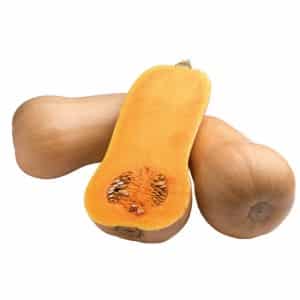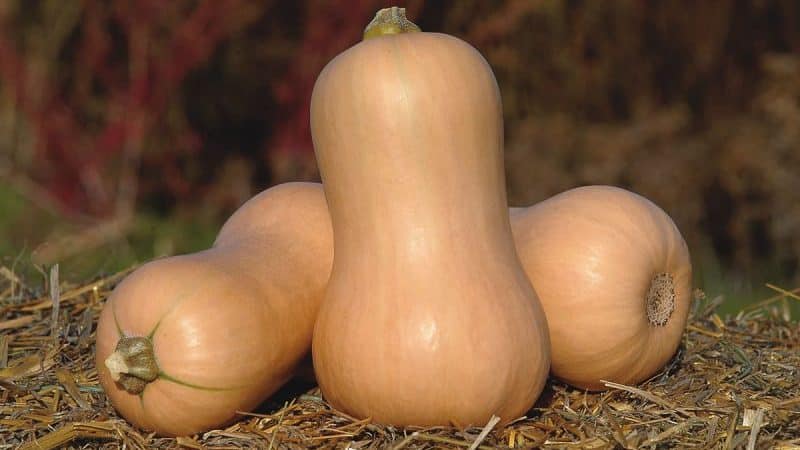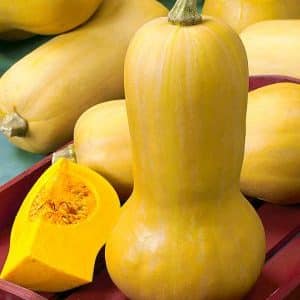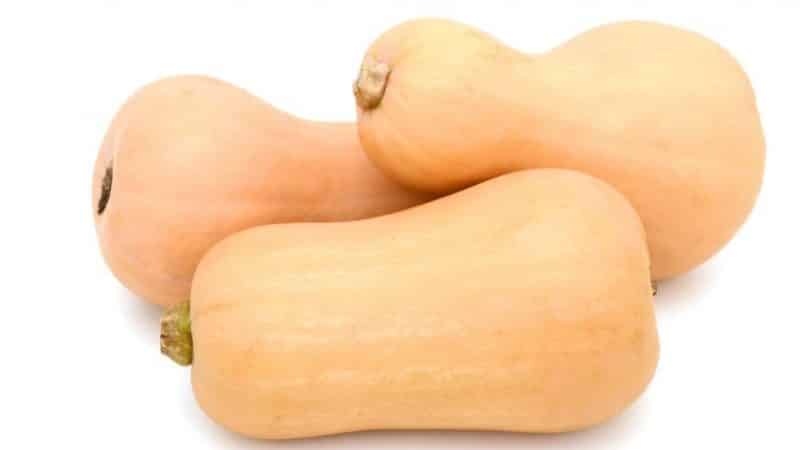Dutch early-ripening hybrid pumpkin “Matilda”: we grow up to 15 kg of fruit per square meter
Pumpkin is one of the most versatile fruit crops. It is used for preparing second and first courses, desserts and even drinks. Despite the low calorie content, the pulp of this representative of melons easily satisfies hunger.
When choosing among the abundance of varieties, many gardeners prefer the Matilda pumpkin. It has a high pulp content and an unusual taste. This hybrid is easy to grow in open ground in absolutely any region of our country. How to do this - read on.
General description of Matilda
Matilda is a first generation pumpkin hybrid bred by Dutch breeders. In 2009 it was included in the State Russian Register.
In the register the hybrid is designated as nutmeg. It is intended for cultivation in central and southern Russia.
Note! Seeds from hybrid fruits are not suitable for sowing. Plants grown from them acquire parental characteristics.
Distinctive features of the hybrid
Matilda pumpkin produces medium-sized fruits. On average, one pumpkin weighs 3 kg.
This nutmeg hybrid has an unusual taste. Its fruits are sweetish, starchy, with a pronounced nutty aroma. When unripe, there is no unusual aftertaste.
Matilda's attractive quality is considered to be the fleshiness of pumpkins. The fruits have thick walls and a small chamber with a small number of seeds. Despite their compact size, they contain a lot of pulp.
Pumpkin Matilda – this is a dietary product with a rich biochemical composition and low calorie content (100 g of product contains only 22 kcal). However, it is easy to get enough of pumpkin pulp.
Pumpkin is healthy for vitamin deficiency and for baby food. It contains vitamins B, A, C, PP, H, K, micro- and macroelements (potassium, calcium, magnesium, sodium, iodine, zinc, etc.), polyunsaturated fatty acids.
Matilda has increased resistance to temperature changes. It can grow in open ground even in regions with extreme climates.
Main characteristics
Matilda's characteristics make it possible to grow it in all regions of our country. The hybrid is not afraid of temperature changes and produces fruits before the first frost.
Description of Matilda pumpkin:
| Options | Indicators |
| Type of ground part | Thick, long-climbing stems reach a length of 5 m. The peduncle is powerful, cylindrical in shape. There are no ribs on the stems. The leaves are large, with five cuts, rich green in color with lighter spots. The powerful root system goes several meters underground. Pumpkin produces many roots near the surface. |
| Fruit | Medium sized fruits. They reach a weight of 2.5–4.5 kg. The shape of pumpkins is pear-shaped or club-shaped. The tough rind is light orange or beige in color. The flesh is bright orange. The fruits are fleshy. Inside is a small chamber with a minimal amount of seeds. Sweet, with a pronounced nutty aroma, the starchy pulp does not fall apart when cooked. |
| Ripening time | Mid-season. Pumpkins ripen 110 days after sowing the seeds. |
| Transportability | High. Pumpkin retains commercial quality during transportation. Can be stored for up to 4 months. |
| Productivity | High.Up to 8 fruits are picked from one plant. From 1 sq. m on average, 15 kg of crop is harvested. |
| Immunity | Resistance to most diseases of melons. This will reduce the need for preventive chemical treatments. |
Agricultural technology
Matilda is resistant to cold snaps and elevated temperatures. She feels great in both the central and southern regions.
Pumpkin is a light-loving crop, so a well-lit area of the garden is chosen for it.
Plant the crop in fertile and loose soil. In areas with poor soil, the plant grows well near manure heaps.
Other melons and cucumbers should not have been previously grown in beds intended for pumpkin. Nightshades and legumes are ideal precursors for Matilda.
Pumpkin beds are prepared in the fall. They are cleared of any plant residues, fertilizers are scattered over the soil (6 kg of manure and 50 g of superphosphate are taken per 1 sq. m) and dug to a depth of 20 cm.
Pumpkin loves slightly acidic soils. Acidity is checked using litmus paper. If the indicators are elevated, the soil is mixed with dry lime.
The looseness of the soil is also corrected. To do this, river sand is added to the soil.
In the spring, it is not necessary to dig up the beds; it is enough to level them with a rake, clear them of weeds and disinfect them with a solution of copper sulfate.

Landing
In the central and northern regions, growing pumpkin is only possible using seedlings. In areas with a warm climate, seed planting is also practiced.
Before sowing, the expiration dates of the seed material are checked. Then it is sorted, removing all loose and withered seeds, and soaked for 3 hours in water at a constant temperature of 40–50 °C.Afterwards, the seeds are wrapped in damp gauze and placed in a saucer, which is covered with film. When the seeds open, they are ready to plant.
Seedlings
Pumpkin seedlings are grown on southern windowsills. The room temperature should be above 27 °C.
To sow seeds, use plastic or peat pots with a volume of 300 ml. The second option is more convenient, since in this case you will not have to remove the plants from the containers when picking. It is possible to plant seeds in peat tablets. For pumpkin, choose blanks with a wide hole.
To grow pumpkin seedlings, use purchased universal soil mixtures or homemade soil. To prepare the soil, mix peat and sand in equal proportions. Add 1 cup of ash and 1 matchbox of superphosphate to a bucket of the mixture.
Drainage (broken ceramics, shell rock or brick) and soil are poured into the container. There should be 2 free centimeters left to the edge of the pots.
2 seeds are planted in each container, buried 2 cm. The soil is watered with warm water, after which the pots are covered with film.
During the process of growing seedlings, it is important to observe the temperature regime:
- before the seeds germinate, the room temperature is maintained at 25 ° C;
- then the seedlings are kept for 7 days in a room with temperatures of 18–25 °C;
- over the next week the temperature should not be lower than 15 or higher than 18 ° C;
- then the containers with the pumpkin are transferred to a room at room temperature.
Seedlings need 16 hours of daylight. Since the seeds are sown in the second half of April, when there is already enough sunlight, it is not necessary to use fluorescent lamps.
Water the plants as the soil dries out. Use warm, settled water.It is important to ensure that the liquid does not get on the leaves of the seedlings.
When the seeds germinate, the stronger plant is left in the pot, and the weaker one pinching.
During the entire period of growing seedlings, fertilizers are applied once: the pumpkin is fed with nitrophoska 2 weeks after sowing the seeds.
A week before planting, the seedlings begin to harden. She is taken outside, gradually increasing the time spent in the fresh air.
A month after sowing the seeds, the pumpkin is ready to be planted in open ground. Holes are dug in the garden bed at a distance of 1 m from each other. Long-acting fertilizers are poured into them, after which the seedlings are placed along with a lump of earth.
After transplanting, the beds are watered. Use 1 liter of water for each pumpkin. At night for the first two weeks, the plants are covered with film.
Seeds
Growing pumpkin without seedlings is possible only in the southern regions. In this case, the seeds are planted directly on the beds. This is done in the second half of May.
The holes are dug in such a way that a distance of 1 m is maintained between them. The holes for seeds should have a width of 20–30 cm. Their depth varies between 6–10 cm.
Advice. Gardeners recommend digging holes of different depths in one bed. This will increase the likelihood of seed germination.
Mullein or humus is poured into the holes. 2 seeds are planted in each hole on different edges.
The plantings are covered with soil and watered with warm water. At least 2 liters of liquid are used per well. The beds are covered with film. Remove it after the seeds germinate.
Cultivation care
Matilda's agricultural technology does not pose any particular difficulties. This pumpkin is unpretentious and resistant to adverse environmental factors. Basic Rules:
- Pumpkin is a moisture-loving plant.The leaves evaporate the liquid coming from the roots into the air, so watering the pumpkin beds should be abundant and frequent. The soil is moistened at least 2 times a week. Use 2.5–3 liters of water per plant. It is important to ensure that during flowering the liquid does not get on the pollen. Otherwise, pollination will not occur.

- The soil should be loosened after each watering. Loosening destroys the earthen crust, which can lead to rotting of the roots.
- During the loosening process, the beds are weeded. This must be done regularly so that the grown weeds do not damage the pumpkin roots.
- Pumpkin loves feeding. The first time organic fertilizer is applied after the formation of the fifth leaf; then every 2 weeks alternate organic and mineral fertilizing.
- When the seeds sprout in the holes, leave the stronger plant, pinching the stem of the weak one.
- Pumpkin vines are pinched, limiting their growth after the sixth leaf. Yellowed leaves are also removed.
Features of cultivation and possible difficulties
Beginning gardeners often encounter a number of problems when growing pumpkins. The list shows the most common of them:
- Pumpkins are slowly turning yellow. This problem occurs if the fruits do not receive enough sunlight. Sometimes pumpkins shade the leaves of the plant. In this case they are removed.
- Little is produced ovaries. The plants may not be able to pollinate on their own. In this case, the stamens of male flowers are artificially connected to the stigmas of female flowers.
- Root rotting. This problem occurs when watering rules are violated. Another possible reason is damage to the roots when loosening or removing weeds.
Growing tips from experienced gardeners
To get a good harvest, you should know a few secrets. They will help avoid many problems and increase the size of the fruit:
- Plants need to be watered and tended when the sun is not active. It is better to do this early in the morning or at sunset.
- On the days of planting, the pumpkin is not watered.
- Pumpkin vines should be tied to trellises. Another option is to run them along a thread to the roof. For these purposes, synthetic thread is used.
- To get larger fruits, no more than 3 ovaries are left on each lash. If more fruit sets, the pumpkins will be smaller.
Diseases and pests
Pumpkin Matilda has high immunity to plant diseases. However, you should not neglect the rules of prevention:
- The soil, containers for growing seedlings and seeds are disinfected. Tools that will interact with pumpkin beds are also treated with disinfecting compounds.
- It is important to follow the rules of watering and pinching. It is with high and low humidity that pathogenic organisms develop.
- Pumpkin is rarely affected by pests. To eliminate the risk of harmful insects, plants are sprayed with a soap solution.
Harvesting and application
The fruits are harvested in the second ten days of August. Matilda's pumpkins also ripen at home. To determine the ripeness of fruits, pay attention to the following signs:
- Light orange peel color. There are no light or green spots on the pumpkin.
- The stalks dry out, harden and turn brown.
- The leaves turn yellow and fall off.
Pumpkin Matilda is suitable for preparing main courses and desserts. It is frozen for use in winter. It is not juicy enough for juices. They are also rarely consumed fresh - the pulp does not have sufficient sweetness.
Advantages and disadvantages of a hybrid

Matilda's advantages:
- fruit compactness;
- abundance of pulp;
- rich taste with a nutty aroma;
- immunity to diseases of melons;
- increased resistance to temperature changes.
Disadvantages include Matilda's hybridity. Its seeds are not suitable for further planting.
Farmer reviews
Reviews about Matilda are mostly positive. This hybrid has no serious disadvantages.
Valeria, Tula: “I’ve been growing Matilda for four years now. A very productive and tasty hybrid. Four bushes are enough for sale, for yourself, and for your children. Fruits with a lot of pulp, very few seeds. There really is a nutty flavor, but only if the fruits are fully ripened on the bush.”
Alexander, Smolensk: “Last year I planted Matilda after reading positive reviews about her. The hybrid did not disappoint. Indeed, tasty and fruitful. I like larger pumpkins, so I leave only three ovaries on the bush. Each fruit weighs 4–5 kg and is pear-shaped, as in the photo.”
Conclusion
Pumpkin Matilda is a hybrid that is characterized by increased resistance to adverse environmental factors. The plant is not afraid of diseases characteristic of melon crops. Therefore, even novice gardeners can grow it.
From one Matilda bush, up to 8 pear-shaped fruits weighing up to 5 kg are collected. But high yield is not the only advantage of the hybrid. Its pumpkins contain a large amount of pulp with an unusual nutty aroma and a minimum of seeds.